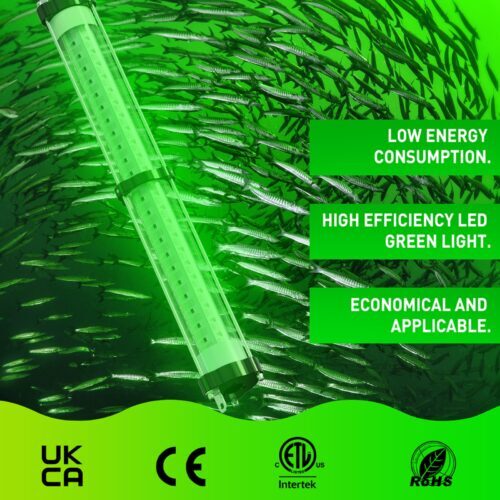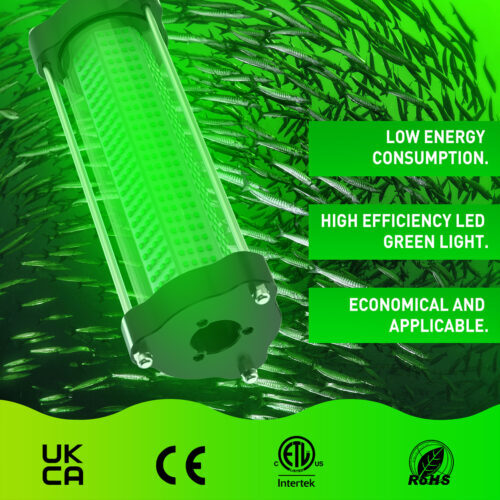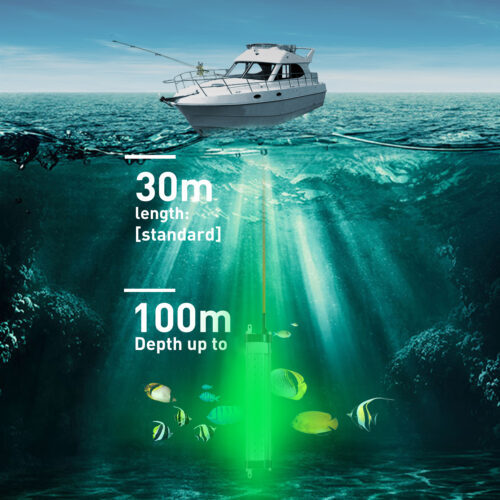If we choose a custom-made light for night fishing, the color of the light is very important for making full use of the two visual effects of fish. Under ideal conditions, green fishing lights in water work best.
Fishermen are now looking for legitimate game species that feed on smaller fish that feed on smaller worms or shrimp. All members of this food web have blue and green sensitive eyes.
As we break down the hues, dark blue is in the 425-490nm wavelength spectrum, while emerald green is at 530nm. Compared with the color of high light wavelength, it is easier to be digested and absorbed by water. Because of this, since green is a higher wavelength color of light, it can make a better underwater fishing light compared to blue. It’s also important to note that true green “LED” hues will appear stronger compared to sodium hues with warmer white tones.
Fish love the real LED underwater green fishing lights color in the water.
Fun fact: Birds have two different types of melanin, one in the dark blue spectroscopic region and one in the ultraviolet region. In contrast, humans have three different visual melanins: blue (440nm), green (530nm) and yellow (570nm). This differential reflection of receptor cells enables color vision.

What materials can support the seawater natural environment?
Whether you are going to be in the water or in the sea, a well-designed underwater green fishing light is indispensable. Although water is not as corrosive as salt water, it still contains electrolytes and residues that can also cause incorrectly designed lamps to burn out prematurely due to electrolysis.
The easiest way to prevent electrolysis is to use lights that are not insulating and/or lights that cannot be made of a different metal. The close combination of different metals and switching power supply is a good way to ensure the electrolysis method. This is also one of the main reasons why the green port fishing lights in the water are too early to be ineffective.
Another major factor in water green fishing lights, especially LED underwater green fishing lights, is moderate heat removal. While putting them in water seems to keep the LEDs from overheating, they can still overheat if they are grouped together or if there is no efficient cooling design to get the heat out of the LED chips.
The scientifically designed LED underwater green fishing lights will have a heat sink, which is dedicated to dissipating heat from the LED chip, and then the water will quickly cool the heat sink plate.


